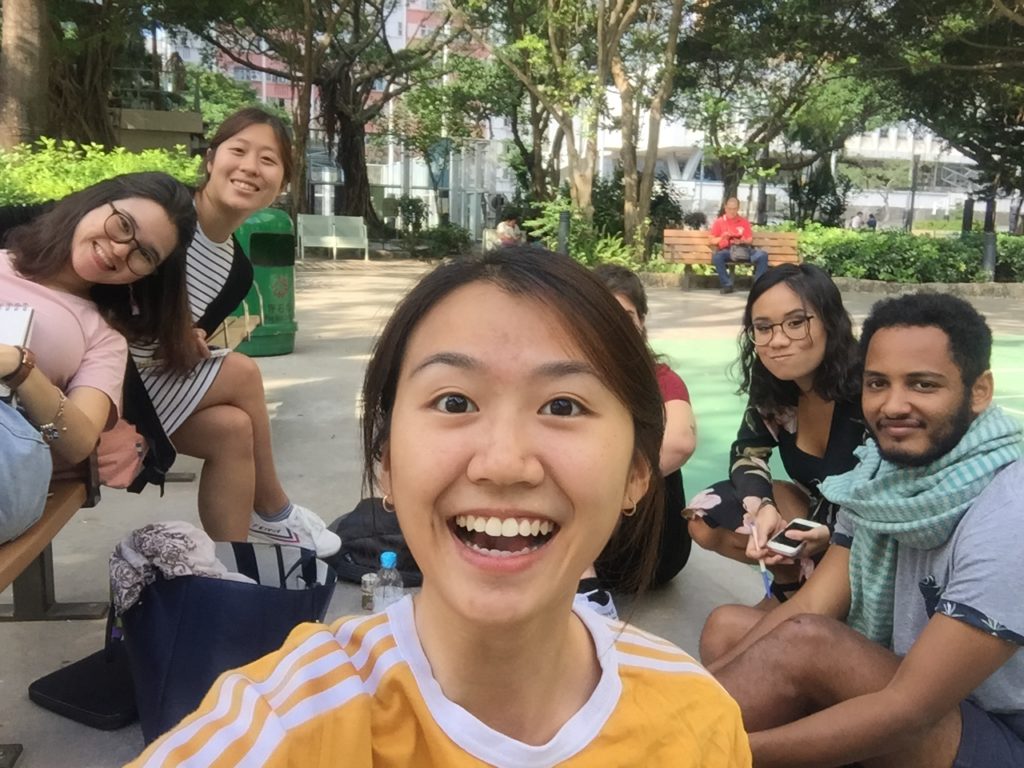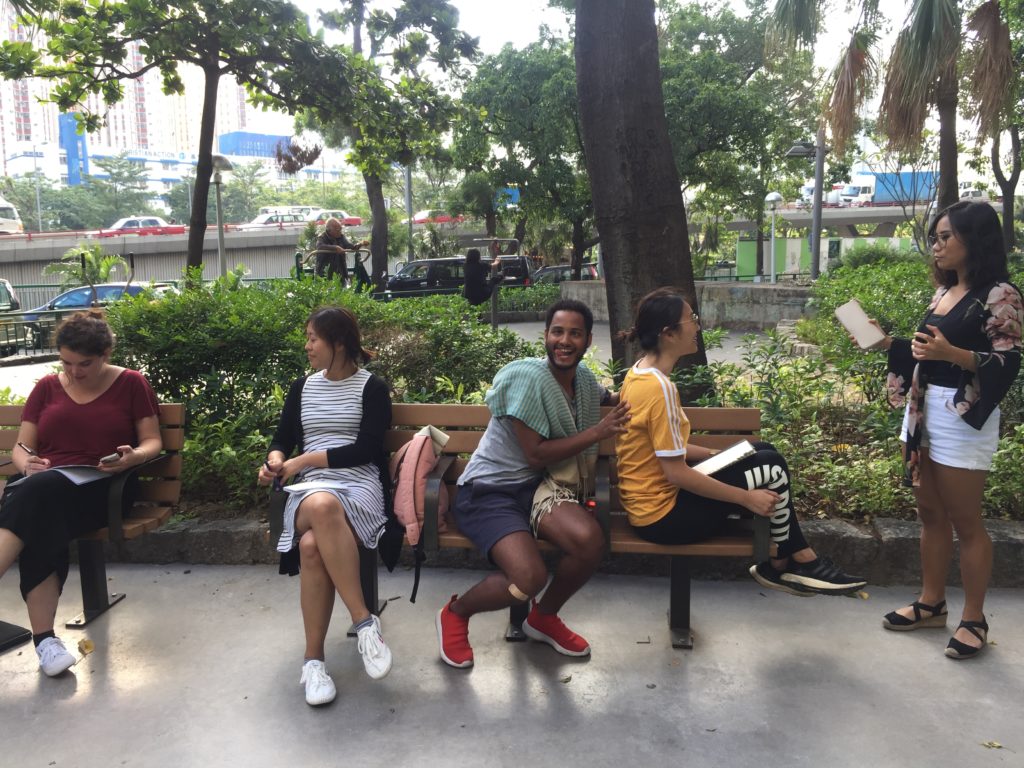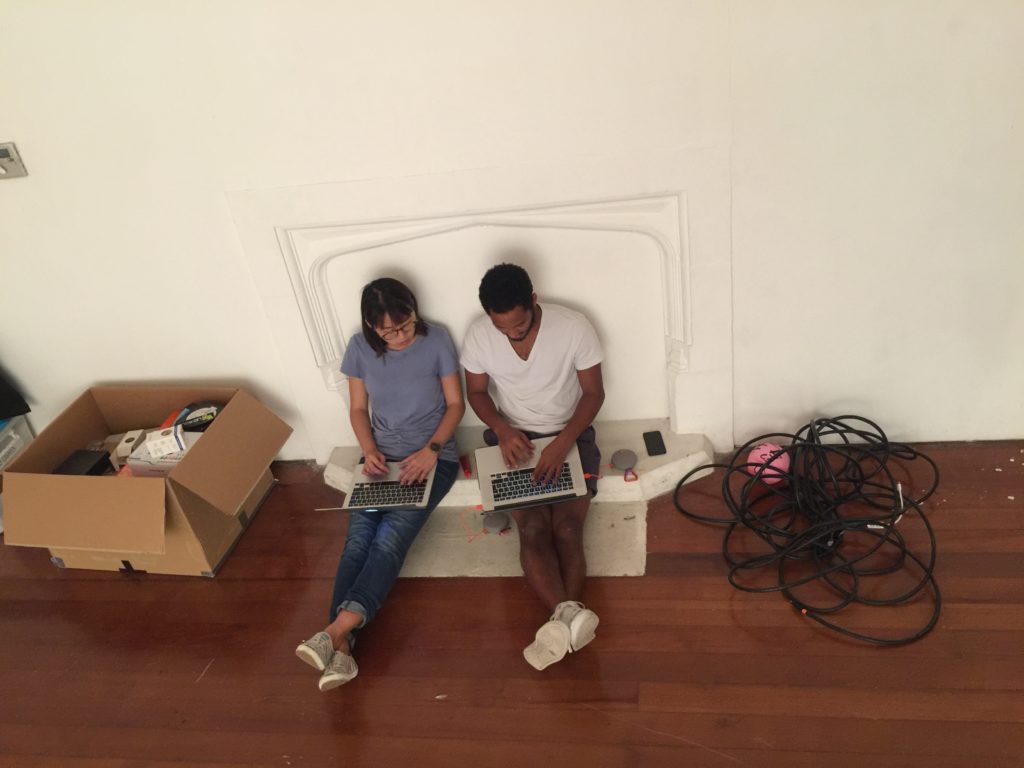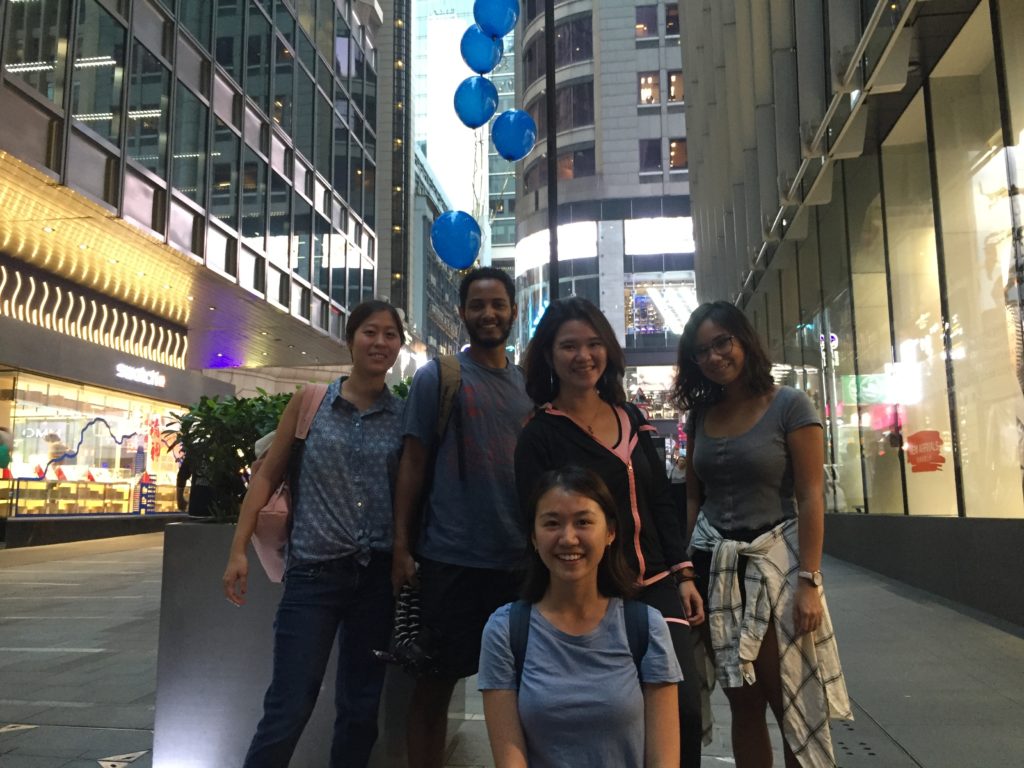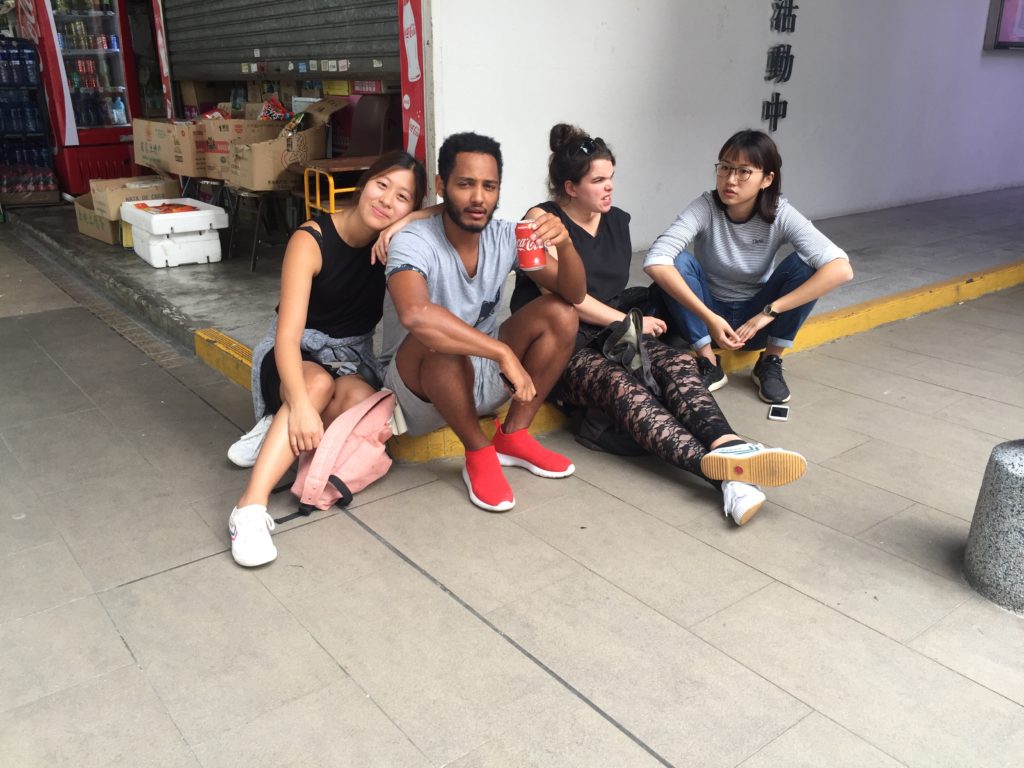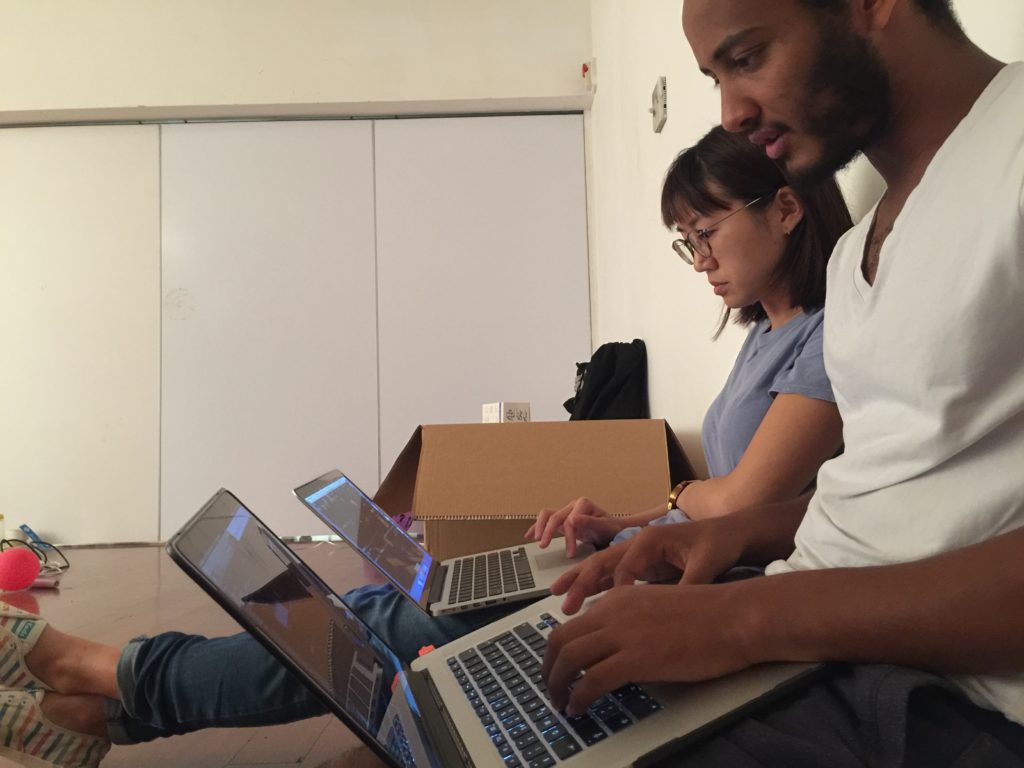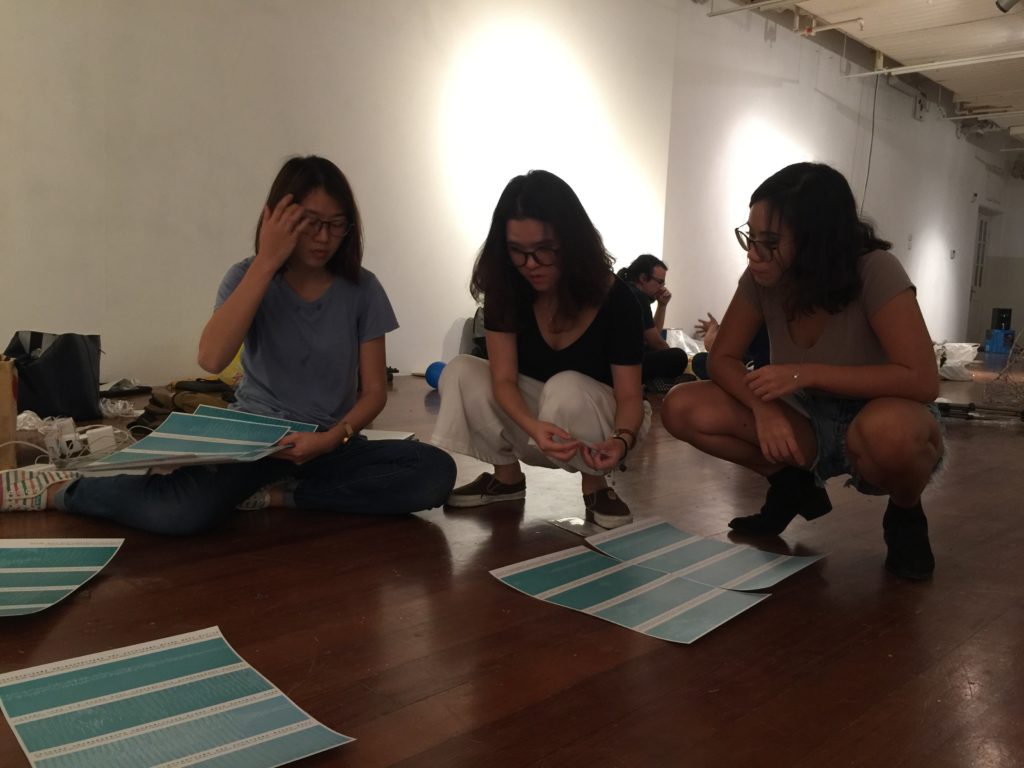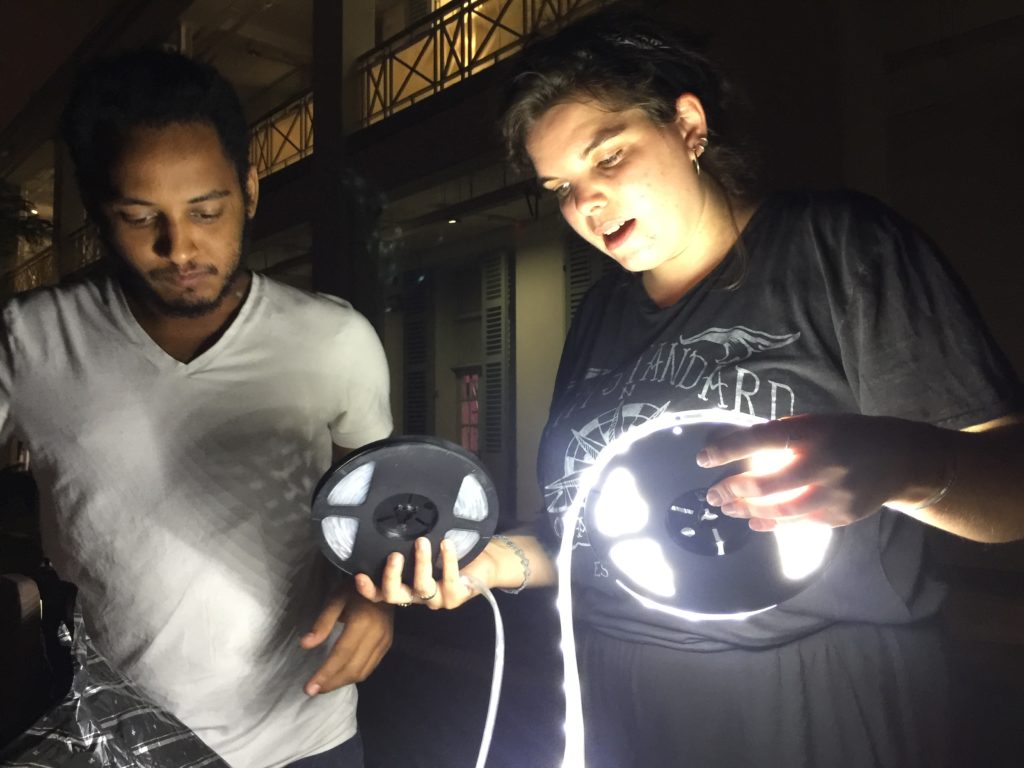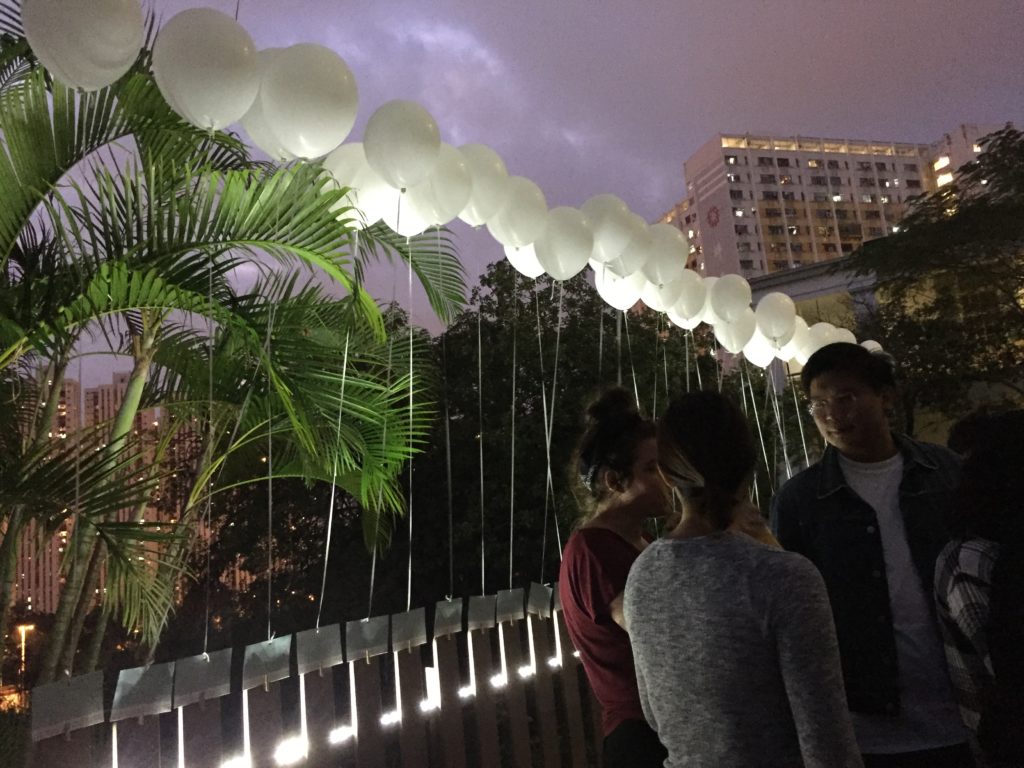For the third and last phase of this year’s programme, individual portraits of the current groups are published in order to give a glimpse into the day-to-day collaborations, convey the intensity of the work process and sketch the interplay between the individual and the collective. Today we present a day in the work of Simona Bischof (art education), Vivian Chan (music/piano), Silas Kutschmann (music/pop), Mei Ting Spencer Poon (fine arts/video), Miley Mei Yan Wong (cinematic design/digital art) and Sir Meng Yau (fine arts) the result of which was presented in the final group exhibition 说了/ 没说 : SPOKEN / UNSPOKEN on the 24th November 2018.
This effervescent group whose members also happen to have built close friendships amongst each other in the course of the past four months found itself initially a bit divided as to what path to pursue: an installation or a performative project. It was not least for the friendships that some of them had hesitated asking themselves whether they should even work together and wondered whether their good relationships would withstand the intensity of a collaboration project. And as far as I can see: they withstood and more than that. Eventually, the team of six went for an installation including an interaction and—hopefully—a growingly participatory outcome. The numerous guests at this year’s final exhibition were enthused to be able to send dozens of balloons up into the picturesquely lit sky at dusk—balloons carrying postcard greetings that are equally intimate as they are political.
I enter the gallery only a couple of days before the exhibition to spend a few hours with them. Mei Ting Spencer Poon and Sir Meng Yau are leaning cross-legged against the wall, preparing material for Saturday’s action at nightfall, Simona Bischof and Vivian Chan are almost on their way out to organise more light, Silas Kutschmann is polishing the sound installation and Miley Wong is out and about printing postcards. This is what I call an efficient division of labour. The first thing I notice is that they seem very relaxed in the way they treat each other and harmonious in how they organise themselves. There’s a playful note and lightness to the team, that strikes me. Sometimes you see them work quietly next to one another, sometimes you hear them chatting, whooping and teasing each other on their way out for snacks.
“I feel like we’ve been through a lot together”, says Yau, “but the suffering was part of it, the endless talking and going over and over our concept, we learned to listen and understand each other and ourselves better.” “Yes”, Poon explains, “in the beginning the group work was quite confusing as everyone had a completely different idea of what to do. Some really wanted to perform in public space while others were more interested in doing an installation work here in the gallery. Me personally, I would have loved to experiment with performance. Although I wasn’t very fond of it in the beginning of the programme, now I really feel like performance is the future, lah!” She says it with a lot of enthusiasm, waggishness and in the high-spirited tone of voice that is typical for her. In that sense, Poon went through a considerable transformation from seeing performance as something alien to her and the way she wants to work up to something that she likes particularly for its abstraction (“It’s so weird!”) and could imagine to make use of in her future art work.
Yau’s past work has mainly been text-based performance or installations with a political spirit, so the Taipei-based Malaysian was already fairly familiar with the artistic media at play. In terms of personal growth, however, she feels like she’s come a long way in the course of TC. Yau who is someone highly reflected, outspoken and awake, is impressed by what she’s learned by collaborating. “It just helps you shift yourself, adjust to the conditions given by the group constellation, I feel like the personal progress that you go through in this programme is a healthy, however risky one. You’re forced to deal with yourself and train acceptance.” Through a lot of discussion, she remembers, did they eventually find common ground where they felt like they shared the meaning of why to go a particular way. She mentions how much she valued the community feeling of their group. That you didn’t have to “suffer through it alone” and could be caught by the people involved in the work with you. And, of course, how it allows you to gradually improve your communication skills. Both, Yau and Poon could imagine to keep working in collaborative settings in the future.
While they patiently keep preparing balloon cords, I join Bischof and Chan for a walk to the MTR station. In the course of this project (and actually during the whole of the programme), Chan has abandoned her specialisation in classical piano and delved deeply into the unknown. This doesn’t seem to bother her though, with a lot of ease, joy and modesty she explains that she just went with the flow of the project and when she found that the piano didn’t really match the setting, she could easily let it go and invest herself into the task at hand. “For me, this whole trans-disciplinary, transcultural thing shed light on other approaches to solving a problem.” Easy-going Bischof wanders next to me and ponders my question how the experience has changed her with a pensive look in her eyes. She explains how she was really impressed by how her collaborators would address problems or think in ways that she wouldn’t. In that way, she goes on to tell me, the programme has really expanded her way of thinking and working. She’s trained to be an art educator but also has an affinity for drawing as well as music and, last but not least, turned out to be a fantastic cook skilled at taking care of others and making everybody laugh with epic stories of her Italian nonna. “The programme helped me practice my inner bambooiness.”, she says with a mischievous laugh.
What Kutschmann perceives as a great challenge for the development of a solid collaboration concept in this last project is language. He compares it to a bottleneck where some ideas and valuable details just don’t make it through. This led him to reflect the limits as well as the value of verbal communication. Over the past couple of months he’s proven to be a dedicated team player. Despite coming from pop music with great ambition and talent for the commercial local and international music scene, he embarked on the programme with a wide open heart to embrace the new and found himself performing and creating installations with his new colleagues from all sorts of backgrounds. He feels like the programme impacted him both personally and artistically, although he leaves with more questions on his mind than he arrived with. We’re talking the big sort of questions like “What is art? What does it want? What is my role in it?”. Kutschmann carries great hunger and curiosity to explore the potential answers through his own creativity. “It was sort of liberating to realise that it will be a constant search.”, he humbly adds.
Last but not least, there’s Wong. A person both lady and tomboy, both kind and tough. Like Poon she is a “true” Hong Konger, and was trained in cinematographic design and photographic digital art. Today, she just briefly rushes in to sync the video projection with the sound of the recorded poem prepared by Kutschmann. Very naturally she flings down her bags next to him and swiftly sits down. She seems completely focused on the work and, though very busy, apparently without any nervousness or tension. While they all do their thing I start reading the poem that they’re sending off to spread out to the city (and who knows—maybe beyond?) and reach the strangers that they address: Dear Stranger is the title of their work. You wouldn’t exactly expect it of this cheerful bunch but their poem is about a feeling of hopelessness. It is of a nostalgic tone which is underlined by the rhythmic sentence “The future is far but how far is it?”. But the hopelessness that they express (they wrote the poem together) isn’t reproduced by the art work. Quite on the contrary: by reaching out and sharing what is felt deep down and, hence, mostly hidden in daily life, by sending the balloons as erratic as well as fateful messengers to cross one’s own bubble’s boundaries, they are bound to create a shared emotional space. And who knows? Maybe some of the postcards will indeed find their way back or… maybe they’ll simply end up comforting or inspiring someone to “collect the power”, which the group calls for by the end of the poem.

